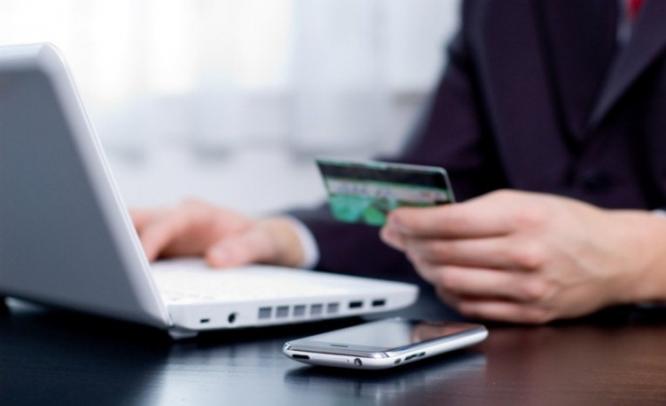Understanding the payment behaviour of UK businesses in Domestic Market is vital.
The Payments Council published the findings of its research, exploring the payments that UK businesses make and receive. The findings reveal that, small businesses are lagging some way behind larger businesses, but seem to be more savvy than individuals in terms of adoption of modern payments technology.
Looking at the percentage of individuals and businesses of different sizes using technology, one of the most surprising findings is that smaller businesses are nearly twice as likely to get online and make payments via online banking, than individuals. Given the internet revolution over the past decade – in particular over the last 6 years with the advent of Twitter and the soaring popularity of Facebook – it is interesting that individuals are lagging behind when it comes to online banking payments.
Percentage of individuals/businesses using different technology
| Individual | Small Business | Large Business | |
| PC with internet connection | 88%*2 | 86% | 93% |
| Smartphone holding | 58%*3 | 43% | 70% |
| Signed up to online banking | 52% | 78% | 91% |
| Use online banking to make payments | 35% | 67% | 83% |
| Social networking use | 54% | 28% | 35% |
Though small businesses have certainly progressed, when comparing with larger businesses, it is clear that there are still improvements to be made if the former are to take advantage of the time savings and efficiencies that using newer technology can bring in the workplace.
Comparing the current picture with ten years ago, big and small businesses have increased the use of technology into their working practices. In 2002, just 15% of all businesses made payments online; in 2011 this had risen to 70%. Similarly, in 2002, 29% of businesses had signed up to use online banking – 9 years later this figure more than doubled to 78%. More businesses are also equipped with internet access; in 2002, 59% were online, whereas in 2011 this figure was approaching 90% – an impressive leap over a relatively small timeframe.
The newly-published research also examines the way that businesses of different sizes make payments. The following table shows the proportion of all outgoing payments (by number of payments) that are made using different payment methods.
Percentage of payments made by different methods
| Individual | Small Business | Large Business | |
| Cash | 61% | 9% | * |
| Cheque | 2% | 25% | 14% |
| Plastic card | 27% | 7% | 1% |
| Direct Debit | 9% | 17% | 1% |
| Standing Order | 1% | 3% | * |
| CHAPS | * | * | 15% |
| Direct Credit | * | 32% | 69% |
| Faster Payments (internet/phone-banking payments) | 1% | 4% | * |
* = less than 0.5%
Table represents number of annual payments made by individuals/small and large businesses
Individuals are far more likely to make cash payments or to use plastic cards, which are not used as extensively by businesses. Small businesses are more likely to make payments by cheque, Direct Debit or Bacs Direct Credit, although their use of Direct Credits lags far behind large businesses, which use these for over two-thirds of outgoing payments. Large businesses are also far more likely to make CHAPS payments. This said, not all payments made by large businesses have transferred over to electronic methods; there remain a small number of large businesses that send out very large volumes of cheques (for example, insurance companies and insolvency practitioners).
The research also shows how businesses receive payments. Cash remains an important method of receiving payments for both small and large businesses – though cash is far less significant by value terms (representing just 8% of income for small businesses and 3% of income for large businesses). Businesses who accept payments from consumers are far more likely to accept plastic cards and cash than those who accept payments from other businesses. Businesses tend to pay other businesses using electronic methods.
Otherwise, most payments tend to be received by plastic cards or, in the case of large businesses, direct into the business bank account. Interestingly, sole traders experience a different pattern of payments from other small businesses, being far more likely to receive cheques and far less likely to receive plastic card payments – potentially as they have not invested in card accepting facilities. Sole traders, which make up about three quarters of businesses, make only 15% of their payments using Direct Credits, with a greater proportion instead using cheque (27%) or Direct Debit (23%).
Percentage of payments received by different methods
| Small Business | Large Business | |
| Direct payment into bank account | 5% | 16% |
| Plastic cards | 28% | 29% |
| Cheques | 3% | 3% |
| Cash | 63% | 52% |
| PayPal or similar service | 1% | * |
* = less than 0.5%
Table represents volumes of annual incoming payments
“It’s great to see so many small businesses making the most of new payments technology. This has gone hand-in-hand with innovation in electronic and card payments over the last decade.
“Businesses have never had so many options in the way that they pay, and with more innovation in the pipeline, now’s the perfect time to make sure as a business, you’re taking advantage of any change that can benefit you.”

